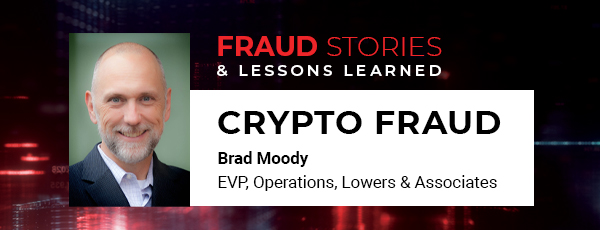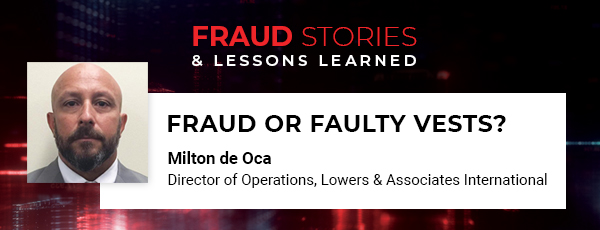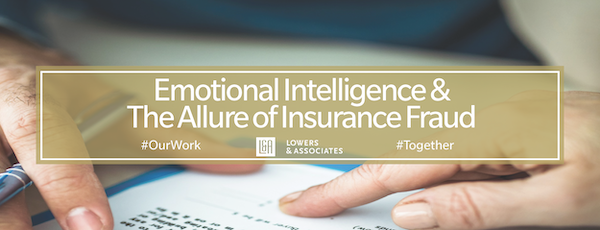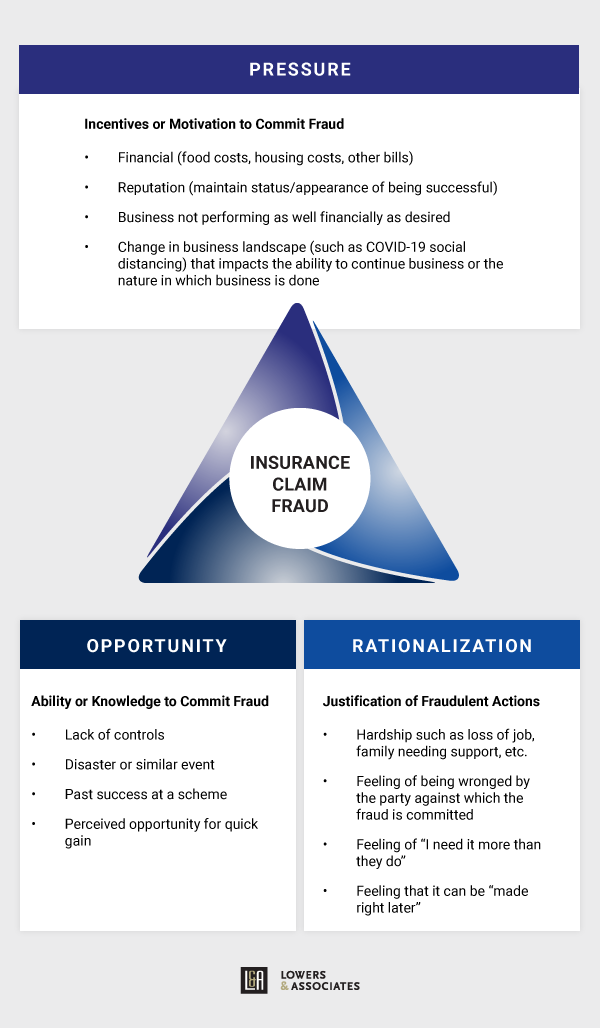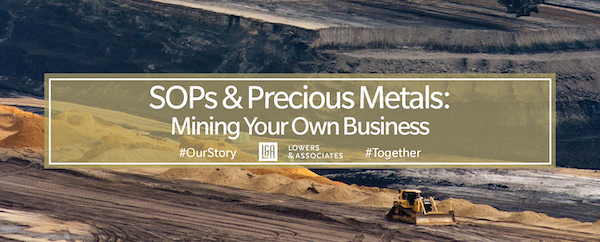
Disclaimer: Portions of this conversation have been edited for length and clarity, and certain locations and details have been modified for privacy reasons.
Standard Operating Procedures (SOPs) are exactly what they say on the tin – a calculated and tested directive used as a foundation for an operation or individual tasking. At L&A, we often use a tree as an example of the mechanics behind an SOP: the roots provide the foundation from which the procedure grows; the trunk is the day-to-day actions and the branches are the end deliverable result.
However, a tree will grow wild if permitted. And left unchecked, SOPs will do the same thing. Unfortunately, the question we most often run into when assessing a business and its SOPs speaks to the reason why avoidable risk exists in the first place: If the SOP isn’t broken, why should we fix it?
As with everything we do in risk mitigation, questions are good, but the bottom line here is that there is no single answer as to “why” fix an SOP. For an SOP to remain viable, it needs to remain malleable while also staying strong in the face of adversity. This means SOP’s need to be challenged, as the current times, technology and industry attitudes constantly change around it. Periodic and systemic reviews and tests are just as integral to the SOP as the original calculated and tested directives that comprise the SOP itself. Some businesses might excel at the review and update process, but even then, they can sometimes fall short by failing to communicate those documented SOP changes to all relevant staff.
As part of #OurStory series, Daniel Cootes, AIExpE and Client Relationship & Operations Manager for Lowers & Associates UK office, shares some insights into his experience assessing an operation in Asia whose SOPs weren’t so much incorrect but existed in an environment where uncertainty was not a risk the insurer was willing to ignore.
So, somewhere in Asia, there’s an operation. The insurer of this operation, our client, needs to determine what type of coverage the operation (their client), needs, so they ask you to assess the active threats in the area. It turns out these threats include local gangs, natural disasters and ISIS. Walk us through securing a facility like this for the insurer – where do you start?
Daniel Cootes
The thought process here begins with how to answer one question, really: Could an attacker cross this facility’s perimeter, suppress the security onsite, get to the vault, breach that vault, take what they want and then get back out? Intelligence leads us to believe that, yes, this sort of attack is possible, but you also ask, is it likely? Where this mine is located, it’s certainly possible, but most of this type of gang activity is in the bigger Southeast Asian cities. Also, this insured has a fantastic piece of nature looking after them, because we’re talking about an operation in the middle of a jungle where it’s pretty much two roads in and two roads out with hours of driving required through dense trees. But you start by recognizing, yes, there is a possibility of this scenario happening, obviously, and go from there.
With an understanding of the facility’s threats, the landscape around it, the likelihood of an attack, the personnel involved, what kind of recommendations did you end up making and how did you reach those conclusions?
Daniel Cootes
Given the parameters and all the different angles that they had, I made some recommendations of what we thought was acceptable, the operation then came back with what they thought was acceptable based on their operational and cultural perspective. Ultimately, it’s about being realistic, and how easy would it be for the operation to implement the updates. Something like this didn’t need to be nuclear bomb proof, so we looked first at the gate and fencing that they had, for example. It was all about 10 years old and in the jungle, things get rotten quickly – it’s hot, wet and horrible, right? And so, they had to commit to review that fencing every six months. We talked about upgrading their roving patrols. We also looked at upgrading their CCTV. Technology nowadays is so inexpensive, there’s no excuse to not have it. There are some other very specific things we did for them that I won’t go into, but a good deal of it comes back to their standard operating procedures and making sure their people are following those.
SOPs are incredibly important, and you were able to assess this facility’s risk entirely through a remote process – how did you do that?
Daniel Cootes
Lots of questions. I kind of like to start from the outside and work my way in. If I turned up at the site, I tried to build the picture of what was in front of me, and what would stop me from getting in. I mentioned the gates already, but I also had questions about their guys on the gates, which guys had access to the CCTV or any alarm systems and how the gates locked – some of these gates might be left open during the day, some of these sites run 24 hours as well. It again comes back to being collaborative and flexible and understanding what’s realistic for them to be able to lock the gate and which of their guys on the gate is involved in that process. Really, you just keep peeling back as many layers of the onion as possible and what it takes to get to the good stuff in the vault.
When you get to the vault, the questions become things like what were they doing to prevent attackers from getting into that space, how well-trained and well-armed their guys were, are the guards their own guys or an outside security company, how are they actually screening these people. You just keep pulling the wool at the jumper and ask all these types of questions. At the same time I’m asking these questions, I have to try and be realistic. I might want them to have a military response, but it’s about understanding what they’ve got and how they can deploy it. I again would go back to the SOPs, who wrote them and how – was the person accredited? How old are the SOPs, what’s changed since then? Have those updates been made and communicated?
All this assumes a breach by people, bad actors. How do you go about mitigating the risk of a natural disaster?
Daniel Cootes
For us and our work, we must think specifically about what insurers are actually insuring. Most have their policies they write for people of course, but in this instance, the high-value goods are what they’re focused on. So, the primary question we need to be able to answer here is: If there is a natural disaster, will this be a total loss with respect that it will never be seen ever again?
For example, let’s say there was a fire in the Louvre gallery and there were no fire suppression systems. Once the Mona Lisa has been burned to smithereens, it’s gone. However, with something like a precious metal, there’s a good chance we can salvage that after a mudslide through excavation or the like, depending on where it ends up. Ultimately though, you can’t really mitigate a mudslide, right? And that’s what insurance is for, those unforeseen, unfortunate circumstances. What you can think about, though, is how the valuables are stored.
When we talk about vaults with cash inside, fire is a risk, so you ask questions about fire suppression systems – what’s in place, what do we need to put in place. For a mudslide, what we can be conscious about is trying not to have the goods scattered all over the place once the slide is over and do our best to keep it in at least a defined area. Because as long as we can get to the vault, it’s not a total loss. So, it was more about how they controlled the inventory – once it comes out of the mine, it’s processed, heads straight into the vault, it’s labeled and locked, check that off the list.
So, talking then about ISIS, how does that factor into the risk mitigation process? That seems like it would bring a whole outside set of geopolitical and other type of problems.
Daniel Cootes
What we’ve seen ISIS do in Africa, is something that could happen at this operation’s location. We asked the operation if they’d thought about a branch attacking them to, not just steal from, but take over the operation. They had, fortunately, and were doing things to keep tabs on the local gangs, they also had access to the military with a few guys onsite, in addition to a few policemen. These were people that were trained in weapons systems, could fight back while a call for more help went in. From there, we dug into questions about their communication capabilities, ran down the list of who controlled those processes, how many satellite or cell phones were available, internet capability, back-up power and generators, and just, again, kept pulling at the thread.
For this operation, ISIS presented a viable threat and was something they needed to include in their SOP, and my assessment was that they needed to refresh some things around that. The likelihood that they could get in, launch an attack, steal something and either leave or occupy to some degree was slim, but it’s good for both the operation and the insurer to be thinking about.
What about this experience was impactful for you personally or for the client? Clearly the whole process resonated with you.
Daniel Cootes
As I mentioned, the SOP’s were dated, in fact the person who had written them was no longer there. Over time, things had clearly changed in their operations, so while the SOPs weren’t wrong per say, they had to update them in line with the way the business was operating currently. They were looking to potentially hold more stock, for example. So, we didn’t reinvent the wheel, the SOPs were written by a pretty competent person, but what they realized they needed to do was pull them out of the drawer more often and compare them to what was going on in the world. What problems are out there and keeping their procedures relevant?
For me, there’s always two benefits to this type of work. One, you’re pleased you’re helping keep people safe, and two should a loss happen, I did everything on the insurers’ behalf possible to mitigate the risks and insure these high value goods, to mitigate every conceivable threat in that respect. For us, the client is always primary, we want to make sure they aren’t hit with any kind of major loss. If we’ve done our jobs right, we can avoid that. For me, SOPs are key, keeping them relevant. They’re awesome to have, but if they’re stuck in a drawer and don’t see the light of day for 10 years or until there’s a problem, that’s not going to work out for anyone real well, is it?

